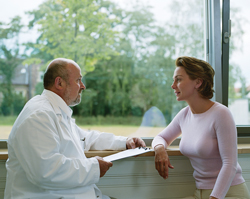‘Preventive’ measures don't translate properly to the public
Prevention is an important tool, but it must be placed in the context of evidence and value. The cost of ignoring that is false reassurance and the politicization of medical care.
The eighth paragraph of the modern Hippocratic Oath reads: “I will prevent disease whenever I can, for prevention is preferable to cure.” Support and encouragement of prevention are deeply rooted among physicians. Intuitively, to prevent a deadly or disabling disease from occurring or stop it at an early stage seems like a bread-and-butter concept with obvious health benefits.
But it should also accrue cost savings by avoiding the treatment of the disease and its complications. Indeed, prevention has been the mantra of many pundits and politicians during the past year's debate on health care reform. Many have held out prevention as the touchstone of health care reform that would bring improved health care outcomes at lower costs.
The proposed health care reform legislation in both chambers of Congress prominently promotes prevention by requiring preventive services to be included in every health plan offered through the health insurance exchange, and by eliminating co-pays for obtaining preventive services. What could be wrong with that?
Enter the U.S. Preventive Services Task Force (USPSTF) recommendations regarding mammogram screening for breast cancer, published on Nov. 17, 2009. The USPSTF's recommendation against routine screening mammograms in women ages 40 to 49 set off a public and political firestorm. In the public's eye, the recommendation was a callous government indictment against the need for prevention of breast cancer itself, not, as it truly was, an evidence-based conclusion regarding a particular program for preventing breast cancer. While the recommendations stated screening in this age group should be based on conversations between a woman and her doctor, some politicians politicized them as a tip-off of the “true” aim of health care reform, to ration care and allow people to die of preventable diseases in order to save money.
To label something as “prevention” does not guarantee that it is good for health care, even when lives could possibly be saved. There's no question that prevention has potential benefit. Tobacco smoking, poor diet, physical inactivity and misuse of alcohol are estimated to be responsible for 900,000 deaths annually, or nearly 40% of the total yearly mortality in the United States. The preventive health benefits of an obese patient voluntarily losing weight are clear. What remains much less clear is the effectiveness of any particular preventive service to encourage weight loss, such as one involving dietary counseling in a medical office.
Too often our patients extract a psychological reassurance from screening tests that is not grounded in reality. “My mammogram was normal” translates into “I don't have breast cancer.” “My chest X-ray was clear so I can keep smoking.” “My normal PSA means I do not have prostate cancer.” Sadly, the false sense of reassurance that makes cancer screening measures popular even with little or no evidence to back the claim does not translate to other preventive programs such as immunizations, which are indeed highly effective in preventing disease.
Likewise, it is a mistake for people to think that prevention will overall save money. Experts suggest that only about 20% of preventive measures, such as counseling a smoker to quit smoking, vaccinating against influenza, and screening men for colorectal cancer, actually generate true cost savings. The other 80% cost money. But prevention is a social good resulting in better health. As such, the important question is not “Can we save money through prevention?” but “How can we get the most ‘value’ from prevention for the dollars spent?”
The frequency of the screening and level of risk of the targeted group have a significant impact on the effectiveness and value of the test. Rutgers economist Louise B. Russell, PhD, calculated that Pap smears for cervical cancer screening every three years cost $41,000 per healthy year, compared with no screening. Screening every two years adds $1.3 million to the tab, and annual Pap smears cost an additional $3.3 million per healthy year gained.
Clearly, prevention is not the Holy Grail of health care reform. It is a very important and powerful tool, but one that requires careful, evidence-based analysis, not politicization. As with any other form of health spending, assessing the benefit of a particular screening intervention requires answers to three questions:
- 1. Is the intervention effective in improving health outcomes?
- 2. What is the value of the benefit per dollar spent?
- 3. How does it compare to other options?
Hard questions? Yes, but if we are to maintain a quality health care system at a price that is affordable, we must begin this process, even if it sounds more like spinach instead of bread and butter.



